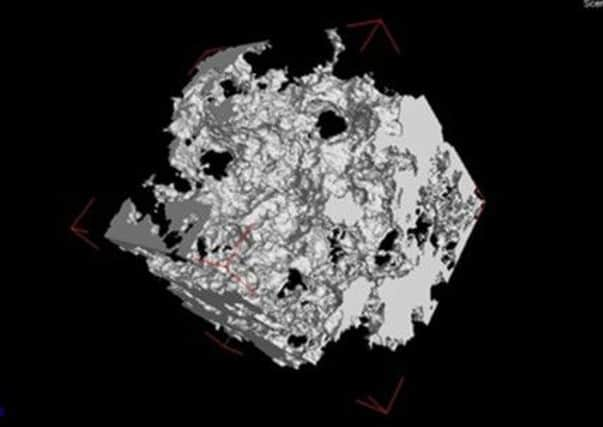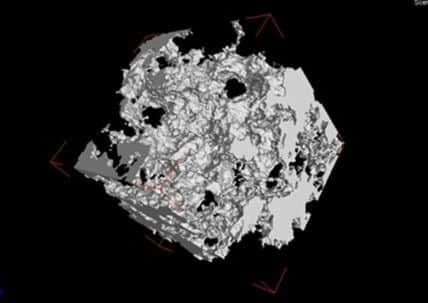3D printed soil developed by Scottish scientists


Using CT scanning, the team at Abertay University’s SIMBIOS Centre has created dramatic 3D images of the intricate structure of soil – revealing a network of pores resembling the holes in an Emmental cheese.
The team have been able to turn the 3D images on the computer screen into incredibly detailed plastic cubes that are printed out as replicas of the structure of the soil.
Advertisement
Hide AdAdvertisement
Hide AdNow the research team, led by Professor Wilfred Otten, is setting out to discover how these microscopic holes, known as “pore spaces,” determine the ways in which the fungi and bacteria living within them interact.


‘Intricate and detailed’
A university spokesman explained: “Although 3D printing is becoming more common, and people can buy 3D printers to use at home, it has never been used to print something so intricate and detailed as soil before.
“By inserting microorganisms, such as fungi and bacteria, into the pore spaces within the plastic soil, the scientists can now observe how these microorganisms move through it, survive, find food sources and interact. “
Prof Otten said: “In the past, before X-ray CT scanning became available, soil samples were taken back to the lab and studied there. But that’s like studying the rubble of a collapsed building – you would never be able to tell what the structure of the building had been before it fell down, how many rooms it had, or how many people lived in or used it, and all the different things the different people used it for.
“These days we all know about the ways that species interact with each other and their environments above ground, and how sensitive they are to changes in their habitats. What we often forget, however, is that everything above ground relies on the soil it stands on – it plays a major role in food security and the carbon cycle, for example – but we still know very little about what goes on down there.”
Prof Otten continued: “What we have become aware of over recent years is that there are millions of organisms living in just 1g of soil. We know that they move around a lot within that environment, and that they interact with each other, but it has always been difficult to study these interactions in the natural environment.
“So 3D printing is a major breakthrough for us, because we now have the ability to examine the structure of soil up close, to see how big the pore spaces within it are, how they are linked together, and how the bacteria move through them as we watch their progress in the lab.”
Analysing species in ‘soil’
Dr Ruth Falconer, another member of the research team, said: “In our experiments, we think of the 3D prints as microcosms and use them to test theoretical models that predict how microbe. like fungi and bacteria, live and survive in 3D structures such as soil.
Advertisement
Hide AdAdvertisement
Hide Ad“We can analyse one species to begin with – providing it with simple food sources – and gradually add more complexity, so that we can eventually get close to replicating the environment they would naturally live in below ground.
“However, it isn’t just the 3D printing which makes all this possible. The CT scanning is how we obtain all the data which shows us what the pore structure looks like so, without it, these live experiments wouldn’t be possible.”